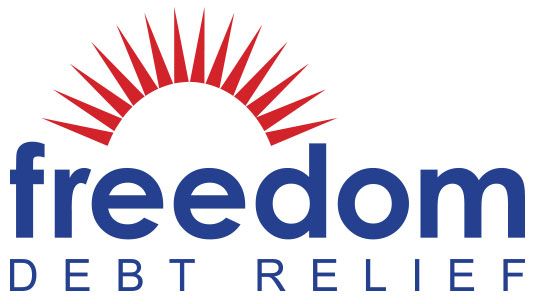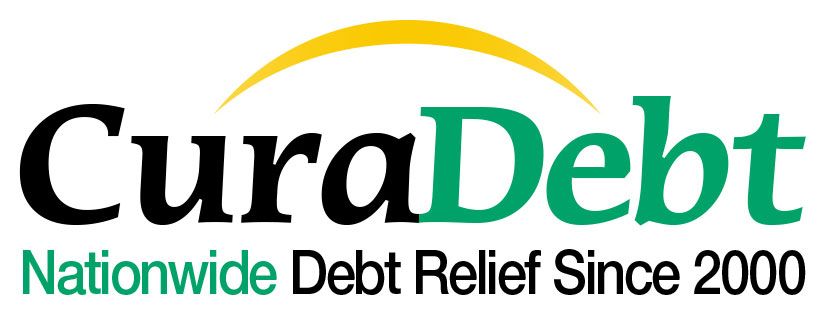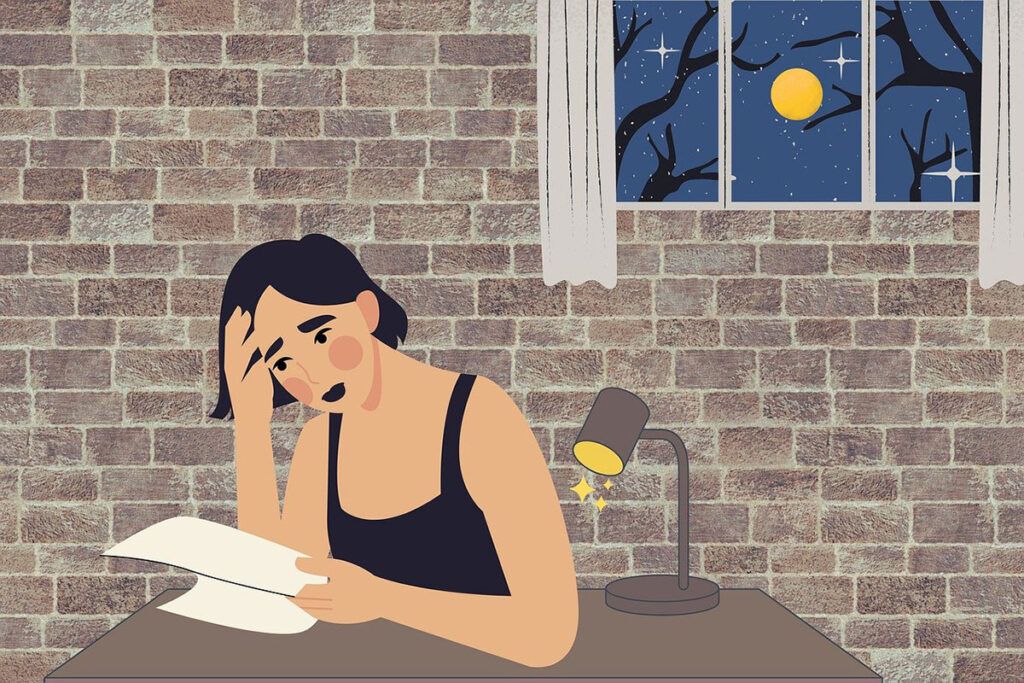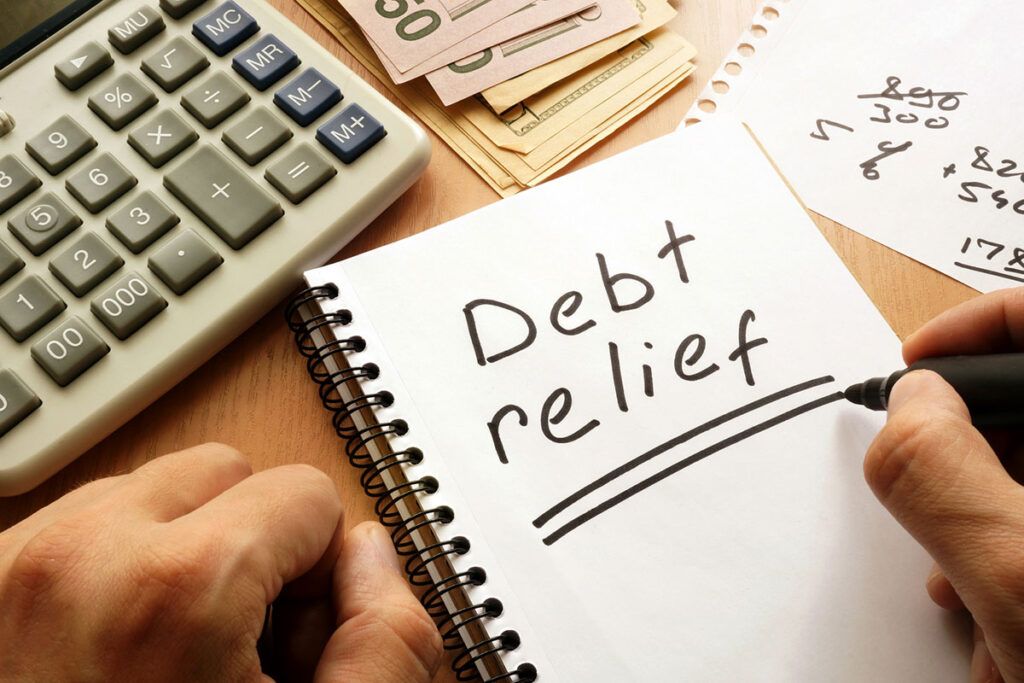7 Best Debt Relief Companies in 2025

Getting into debt is easy, but getting out of debt can be much more challenging and time-consuming. The best debt relief companies can make the process easier, allowing you to pay off debts sooner, get help with debt management, and work toward improving bad credit.
Best Debt Relief Companies in the U.S.
- National Debt Relief
- Pacific Debt Relief
- Freedom Debt Relief
- Accredited Debt Relief
- New Era Debt Solutions
- CuraDebt
- ClearOne Advantage
Debt relief refers to strategies that help reduce the amount of money you owe. The primary goal of debt relief is to provide a manageable path to financial stability, either by restructuring the debt or by reducing the amount due.
There can be risks involved when dealing with a debt relief company, but only if you use debt consolidation or debt settlement companies with shady practices. The best debt relief companies can help you climb out of debt and get closer to a solid financial future.
National Debt Relief

Company Overview
National Debt Relief offers one of the nation’s most popular debt relief programs, allowing customers to pay less money to their creditors using a debt management plan. The company was founded on the premise of making it easier for the average American to pay their debts and boost their credit for a healthy financial future. To date, National Debt Relief has helped over 600,000 people negotiate and manage their debts.
👍
Pros
- Accredited with the American Association for Debt Resolution
- Customer support is available each day of the week
- A+ accredited BBB rating
- Relatively transparent fees
- Some profits go to charity each month
👎
Cons
- Fees to work with National Debt Relief can be as high as 25% of debt
- Must have at least $7,500 in debt and be behind on payments
- Some debts are ineligible for settlement
Year Founded: 2009
BBB Rating: A+
Areas Served: All states except Connecticut, Oregon, Vermont, and West Virginia
Fees: Typically 18%-25% of enrolled debt
Customer Service Hours: 8 a.m. to Midnight EST on weekdays; 8 a.m. to 10 p.m. EST on weekends
Why We Chose National Debt Relief
National Debt Relief is consistently a top choice among people with multiple debts, offering plans that can help you climb out of debt in as little as two years.
Services Provided
- Free consultations
- Negotiations for personal loans, medical bills, credit cards, and other unsecured debt
- Personalized debt relief program
- Satisfaction guarantee
How It Works
National Debt Relief helps people with unsecured debt, like business debt, credit card debt, and lines of credit, get an affordable, customized plan to pay off their debts. Only people experiencing financial hardship, such as losing a job or experiencing a medical problem making them unable to work, can use its services. When you enroll your debt with National Debt Relief, the company creates a personalized plan to settle your debts within a specific timeframe, usually between 24-48 months.
During this time, you’ll pay National Debt Relief a monthly payment that includes money that goes toward your debt and a fee for National Debt Relief’s services. This fee is typically 18% to 25% of your enrolled debt. The company works directly with your creditors to pay your negotiated monthly costs, allowing you to clear your debts hands-free.
If National Debt Relief can’t settle your debts how and when it promises, you can cancel your plan for no additional charge at any time.
Read the full review of National Debt Relief >>
Pacific Debt Relief

Company Overview
Also known as Pacific Debt Inc., Pacific Debt Relief was founded in 2002 to balance the expanding credit card industry and the inevitable stockpile of resulting debt on consumers. Located in San Diego, California, Pacific Debt Relief has helped settle more than $500 million worth of debt for its customers through affordable debt relief plans and debt negotiations.
👍
Pros
- Over 20 years in the industry
- Free consultation for potential customers
- A+ accredited BBB rating
- Completes a soft credit check only when providing a consultation
👎
Cons
- No secured debt is accepted for a debt relief plan
- Not available in 18 states, including Ohio, South Carolina, and West Virginia
- Requires $10,000 of unsecured debt to qualify
Year Founded: 2002
BBB Rating: A+
Areas Served: 32 states, including Alabama, Kentucky, and New York
Fees: 15%-25% of enrolled debt
Customer Service Hours: 6 a.m. to 7 p.m. PST on Monday-Thursday; 6 a.m. to 4:30 p.m. PST on Friday; 7:30 a.m. to 4:30 p.m. PST on Saturday
Why We Chose Pacific Debt Relief
Pacific Debt Relief’s high customer satisfaction and outstanding customer service make it a trusted debt settlement company for people wanting to free themselves from large amounts of debt.
Services Provided
- Free debt consultation
- Debt management plans
- Debt settlement
How It Works
Pacific Debt Relief helps consumers with unsecured debt of $10,000 or more, including credit card debt relief, personal loans, and some student loans. Every potential customer starts with a free consultation, during which Pacific Debt Relief reviews their debts and provides a preliminary quote for a debt management plan.
After enrollment, you pay Pacific Debt Relief a monthly payment, from which the company uses a portion of your payment to pay your debts for you. The rest is your fee to Pacific Debt Relief, usually between 15% and 25%. Pacific Debt Relief will also negotiate down your debt with creditors to help you pay less over time.
Throughout the process, you get personalized service to help you understand your plan and how Pacific Debt Relief manages your debt.
Read the full review of Pacific Debt Relief >>
Freedom Debt Relief

Company Overview
Freedom Debt Relief is one of the founding members of the American Association for Debt Resolution (AADR) and consists of over 200 professional debt negotiators and more than 550 certified debt consultants. To date, the company has helped serve more than 850,000 customers with personalized debt relief plans.
👍
Pros
- No upfront fees
- Customers hold funds in an account they control
- A+ accredited BBB rating
- Customers can approve debt settlement offers before they occur
👎
Cons
- Not all types of debt are eligible
- Debt relief programs can take up to four years to finish
- Requires $7,500 of debt to qualify
- Not available in several states
Year Founded: 2002
BBB Rating: A+
Areas Served: 22 states, including Maine, South Dakota, and Utah
Fees: 15% to 25% of enrolled debt
Customer Service Hours: 8 a.m. to 9 p.m. EST Monday-Thursday; 8 a.m. to 8 p.m. EST Friday; 10 a.m. to 8 p.m. EST on weekends
Why We Chose Freedom Debt Relief
With over 20 years of experience in the accredited debt relief industry, Freedom Debt Relief offers debt management solutions that keep some of the control in customers’ hands as they free themselves of debt collectors.
Services Provided
- Free consultation for debt management
- Personalized debt relief program
- Debt negotiation
How It Works
Upon calling Freedom Debt Relief, you’ll get a free consultation that reviews your current debts and your goals for your financial future. A debt consultant will then provide you with a plan to pay off your debt within your desired timeframe.
If you accept your plan, Freedom Debt Relief sets you up with a dedicated financial account that you can move money into and control. Your monthly payment that Freedom Debt Relief uses to pay your creditors goes directly into this account. Before the company settles debt on your behalf, you can choose whether to accept or refuse the settlement.
Currently, Freedom Debt Relief accepts only unsecured debt, such as store credit cards and medical bills.
Read the full review of Freedom Debt Relief >>
Accredited Debt Relief

Company Overview
Accredited Debt Relief offers financial management solutions, including debt consolidation loan options and debt management plans, to people wanting to get their financial health on track. The company’s team of professionals works closely with creditors to negotiate debt settlements and help customers create manageable repayment strategies. The company currently has over 300,000 people enrolled and working toward financial freedom.
👍
Pros
- Extended customer service hours
- Free consultation
- A+ BBB rating paired with overwhelmingly positive reviews
- Helpful debt management resources
👎
Cons
- Won’t accept all debt
- At least $10,000 in debt required
- Debt consolidation may require an origination fee
- Not available in 20 states
Year Founded: 2011
BBB Rating: A+
Areas Served: 30 states plus Washington, D.C.
Fees: 15% to 25%
Customer Service Hours: 8 a.m. to 11 p.m. EST Monday to Friday; 8 a.m. to 10 p.m. EST Saturday and Sunday
Why We Chose Accredited Debt Relief
Accredited Debt Relief works with its clients to find the best debt management solution to fit their goals and provide long-lasting debt relief.
Services Provided
- Debt management plans
- Debt negotiation
- Free consultations
- Educational tools and resources
How It Works
Accredited Debt Relief allows clients to enroll their unsecured debts, including medical bills and private student loans, into a debt consolidation plan with one monthly payment to get debt settled and paid off faster.
While clients pay money toward their debt relief plan, Accredited Debt Relief contacts their creditors to negotiate settlements. Although most customers have about 45% of their debts settled, some plans offer as much as 60% or more in savings. Monthly payments are withdrawn automatically each month to keep customers on track with their debt payoff, but payments can be adjusted if needed.
Customers can get a free quote on the Accredited Debt Relief website to get an idea of how much debt they can expect to settle before contacting the company to speak with a consolidation specialist.
Read the full review of Accredited Debt Relief >>
New Era Debt Solutions

Company Overview
Originally founded in 1999 as DTS Financial, a financial consulting firm, New Era Debt Solutions pivoted into the debt relief company it is today in 2007. Since its start, the company has helped settle over $275 million in debt. New Era Debt Solutions is highly committed to transparency, offering clear, public data on its website about its success rates and what customers can expect.
👍
Pros
- Online account makes it easy for clients to track their progress
- Free consultation
- Highly positive reviews
- Transparent information about settlements
- Lower-than-average fees
👎
Cons
- No weekend support hours for current customers
- Not available in Iowa, Maine, or Oregon
- More than 18% of customers have dropped out of their plans
Year Founded: 2007
BBB Rating: A+
Areas Served: 47 states
Fees: 14% to 23% of debt enrolled
Customer Service Hours: 7 a.m. to 8 p.m. PST Monday to Saturday for prospective clients; 8 a.m. to 5 p.m. PST Monday to Thursday for current clients
Why We Chose New Era Debt Solutions
New Era Debt Solutions is one of the few debt relief companies to openly include information about its average settlement rates and reasons for customers not continuing with their plans on its website for prospective customers to see before enrolling.
[starburst] New Era Debt Solutions is transparent about its services, offering clear data on success rates and customer experiences on its website.[/starburst]
Services Provided
- Free debt analysis
- Personal debt counselor
- Custom debt management plans
- Online debt calculator
How It Works
New Era Debt Solutions starts each customer’s journey with a free analysis of their debt, which is conducted by phone with a debt relief counselor. During this call, you’ll learn how the process works, how much you can expect to pay each month, and how much of your debt may be included in the debt settlement plan.
Throughout the course of your plan, you’ll pay a monthly fee to New Era Debt Solutions, which is usually about 1.5% of the amount of debt you owe. The company uses this money to settle and pay down your debt, while an average fee of 14% to 23% goes to New Era Debt Solutions as payment for its services.
Most customers can be debt-free with a New Era Debt Solutions plan in three years or less.
Read the full review of New Era Debt Solutions >>
CuraDebt

Company Overview
CuraDebt works with people who have personal, tax, or business debt, using its range of debt settlement professionals with experience in specific debt areas. The company offers in-person debt relief services to customers near its headquarters in Hollywood, Florida. Prospective customers can view real settlement letters on the CuraDebt website that the company has used to settle its clients’ debts over the years.
👍
Pros
- Offers help for business and personal debt
- Free consultation
- Credit repair services available upon completing a program
- Only $5,000 in debt needed to qualify
👎
Cons
- Not available in 14 states
- Website is a bit clunky to navigate
- Limited weekend customer support hours
Year Founded: 2000
BBB Rating: A+
Areas Served: 36 states
Fees: Up to 20% of settled debt
Customer Service Hours: 9 a.m. to 8 p.m. EST Monday to Friday; 10 a.m. to 3 p.m. EST Saturday
Why We Chose CuraDebt
CuraDebt has some of the lowest fees and debt minimums of the best debt relief companies, allowing people in virtually all financial situations to get help.
Services Provided
- Free debt consultation
- Business and personal debt settlement
- Debt negotiation
- Credit repair assistance
How It Works
CuraDebt’s debt relief options work a bit differently than other debt settlement companies, allowing customers to pay a fee to CuraDebt when each debt settles rather than pay a monthly fee. This fee is up to 20% of the customer’s settled debt, similar to what other debt relief companies charge monthly to pay down and negotiate debt.
In addition to negotiating and settling personal, tax, and business debts, CuraDebt helps customers after they’ve paid off their creditors by offering credit repair services for free. The service can extend for several months after paying off debt to ensure steady credit building.
Read the full review of CuraDebt >>
ClearOne Advantage

Company Overview
ClearOne Advantage was founded by Tomas Gordon, a debt relief professional who wanted to find ways to help Americans climb out of debt long-term during the tumultuous financial period of the early 2000s. Since then, the company has grown to having over 600 employees and helping thousands of people across the country settle debts and work toward a brighter financial future.
👍
Pros
- Free consultation prior to setting up a plan
- Saturday chat support hours for clients
- 30-day satisfaction guarantee
- Customers pay only when debts are settled rather than upfront
👎
Cons
- Minimum debt of $10,000 needed to qualify
- Debt settlement plans may take as long as 5 years
- Most people pay as much as 25% of enrolled debt
- Not available in 28 states, including New Jersey, Ohio, and West Virginia
Year Founded: 2008
BBB Rating: Not rated
Areas Served: 22 states
Fees: Up to 25% of enrolled debt
Customer Service Hours: 9 a.m. to 5 p.m. EST Monday to Friday
Why We Chose ClearOne Advantage
Based in Baltimore, Maryland, ClearOne Advantage has over 15 years of experience in the debt relief industry, helping customers settle their debts without needing to pay upfront fees.
Services Provided
- Free savings estimates
- Custom debt settlement plans and debt negotiations
- Online debt resources
- Dedicated team of professionals
How It Works
ClearOne Advantage is best for people with unsecured debts of at least $10,000. This type of debt is typically in the form of credit card debt and personal loans. The company starts by assessing your debt with a free consultation and giving you a personalized estimate of how much you can save through debt negotiation and settlement.
Once your plan is in place, you’ll begin paying a monthly payment to ClearOne Advantage. The company uses that money to pay your debt on your behalf, negotiating and settling with your creditors along the way. You’ll usually pay about 25% of your enrolled debt in fees to ClearOne Advantage for its services.
You can also pay more than your agreed-upon monthly payment, which gets held in an escrow account, to help pay down your debt faster.
Understanding Debt Relief

Debt relief operates through various means, depending on the individual’s financial situation and the chosen relief method. One common approach is debt settlement, where companies negotiate with creditors to accept a payment that’s less than the total amount owed.
Another option is debt consolidation, where multiple debts are combined into one loan with a single monthly payment, often at a lower interest rate. There are also debt management plans, where credit counselors work with creditors to establish a repayment plan that’s affordable for the debtor. Regardless of the method, the end goal is always to help individuals regain control of their finances and reduce their debt burden.
Yes, there is good debt vs. bad debt. Some debt is certainly better than others to have in terms of what shows up on your credit report and what affects your credit score. Still, having multiple debts can be challenging to manage, no matter what kind of debts they are.
Debt consolidation can sometimes work, but moving debts around isn’t always the best answer, either. Instead, focus on how to get out of debt as quickly as possible by negotiating debt and getting that personal loan, tax debt, or credit card debt paid off.
The best debt relief companies are designed to negotiate debts with creditors to help you pay off your debt quicker and, usually, for less money. Although you’ll need to pay fees to debt settlement companies, the amount you pay for a debt relief service is typically less than you’d pay if you continued to pay interest to a creditor or have to pay off your creditor in full.
Types of Debt Relief

When facing financial challenges, there are several types of debt relief options available to help individuals manage their obligations. Each option offers a distinct approach to reducing or restructuring your debt.
Debt Settlement
When you’re deep in debt, one option you might consider is debt settlement. Debt settlement is a negotiation process where you work with your creditors to agree on a reduced amount that you’ll pay. This reduced amount is often less than the total you owe. The goal is to provide some financial relief while allowing creditors to recover a portion of the debt.
Many people choose to work with debt settlement companies to handle these negotiations. Just keep in mind that they do charge fees for their services. Also, settling a debt for less than what you owe can have negative consequences on your credit score. So while you might save money in the short term, your ability to borrow in the future could be affected. Weigh the pros and cons carefully before choosing this route.
Debt Consolidation Loans
Handling multiple debts can get complicated with all the various payment schedules and interest rates. In this situation, debt consolidation loans can help. Instead of managing numerous debts, you obtain one loan to cover them all. This single loan should have a more favorable interest rate than the combined rates of your initial debts, leading to savings over time. Be sure to do your homework, and always compare available loan options to secure the best terms and a monthly repayment plan within your budget.
Forgiveness Programs
Debt forgiveness programs can cancel part or all of what you owe. A well-known example is the federal student loan forgiveness program. If you work in specific jobs, like public service roles, and meet certain conditions, you can have a portion or all of your student loans forgiven. However, there are strict rules, and the amount that gets forgiven might be considered as taxable income. If you’re considering a forgiveness program, be sure to thoroughly research the terms and requirements.
Credit Counseling
If you’re feeling overwhelmed by your debts, credit counseling can be a helpful resource. In this approach, you work with a credit counseling agency. These professionals can offer guidance on managing your debts and money in general.
One key service they provide is the creation of a Debt Management Plan (DMP). With a DMP, they negotiate with your creditors on your behalf. You may be able to reduce interest rates on your debts and even get some fees waived.
You’ll send a single payment to the credit counseling agency each month, and the company distributes the funds to your creditors. While this simplifies the repayment process and can provide some relief, you are still responsible for repaying your entire debt. Always research and select a reputable agency, and be wary of those that charge high fees or make unrealistic promises.
Balance Transfers
If you’re grappling with debts across several credit cards, a balance transfer could be a viable solution. You can transfer the amounts you owe from multiple cards to a single card with a lower interest rate. There is often a fee associated with the transfer, which could be a set amount or a percentage of the transferred sum.
Many banks will offer a 0% interest rate for a promotional period. After the promotional phase, which typically lasts 12 to 18 months, the rate usually increases, sometimes significantly. Carefully review the terms and be sure to pay off the transferred amount before the rate hike.
401(k) Loans
When you take a 401(k) loan, you’re borrowing money from your retirement savings. One clear advantage of this type of loan is that you often get a lower interest rate than with other types of loans. Also, the interest you pay on a 401(k) loan goes back into your account.
However, this choice has some downsides. By taking money out, you’re missing potential growth opportunities for your retirement funds. And if you don’t pay back the loan within the set timeframe or if you leave your job, you might need to repay the loan much faster. Failing to repay the loan results in taxes and penalties which can have long-term effects, so it’s important to understand the risks.
Hardship Programs
In life, unexpected events can lead to financial challenges, making it hard to meet regular debt obligations. Some creditors offer hardship programs designed for borrowers undergoing temporary financial strains. These programs provide short-term relief and give borrowers a bit of breathing room during tough times.
The specifics of these programs can vary by creditor, but benefits often include temporarily reduced interest rates, elimination of certain fees, or even a pause on required monthly payments. By taking advantage of a hardship program, borrowers can avoid falling further behind, and it may provide a buffer against negative credit reporting.
If you find yourself in a tight financial spot, reach out to your creditors proactively and inquire about any available hardship programs. Being proactive can show creditors your commitment to repaying the debt.
DIY Negotiation
Not everyone in debt wants help from an agency or third-party company. For those who feel confident in their communication and negotiation skills, DIY negotiation is worth considering. This approach involves directly contacting creditors and negotiating terms that might be more favorable. This could mean requesting a reduced interest rate, waiving late fees, or even settling for a lesser amount than originally owed.
Doing your own negotiations can save you from paying third-party fees, but it requires significant preparation and a solid understanding of your financial situation. Be clear on what you can afford, and know your rights as a borrower. If you’re willing to invest the time and effort, DIY negotiation can be a cost-effective way to address debt.
Bankruptcy
Bankruptcy serves as a legal means to assist individuals in discharging their debts and establishing a fresh financial start. However, choosing this path comes with consequences, like impacting your credit rating for a significant duration and potentially requiring the liquidation of assets.
Chapter 7 Bankruptcy
Often referred to as “liquidation bankruptcy,” Chapter 7 allows debtors to eliminate the majority of their general unsecured debts. A bankruptcy trustee is appointed to sell non-exempt assets, using the proceeds to pay off creditors. This form of bankruptcy offers quick relief, but specific assets may need to be sold. The mark of Chapter 7 bankruptcy remains on your credit report for up to 10 years, which can influence future lending opportunities.
Chapter 13 Bankruptcy
Unlike Chapter 7, Chapter 13 is described as a reorganization bankruptcy. It enables debtors to retain their properties. However, in exchange, you must commit to a structured repayment plan, addressing either a portion or the entirety of your debt for 3 to 5 years. This approach allows for more asset retention and provides a structured path to clearing debt, but it still has lasting effects on credit score, remaining on reports for up to seven years.
Before considering bankruptcy, consult with a financial advisor or attorney to understand the long-term implications and ensure it’s the best solution for your unique situation.
Before you commit to a debt relief plan, you may want to consult with a financial advisor or attorney to understand the long-term implications and ensure it’s the best solution for your unique situation.
Does Debt Relief Hurt My Credit?

Debt relief is a strategy many consider when facing mounting financial obligations. While it offers a potential path to financial stability, its effects on credit are a common concern.
When you choose debt relief, especially in the form of debt settlement, it typically affects your credit score for up to seven years. Settling an account, or agreeing to pay less than what is owed, can decrease your credit score. However, it’s a more favorable action compared to completely defaulting on your debts.
After undergoing debt settlement, rebuilding your credit becomes essential. You can do this by maintaining low credit utilization, paying off card balances in full each month, and ensuring timely payments. Just one missed payment can further lower your credit score.
Different debt relief methods have varied impacts on credit. For instance, debt settlement often leads to a drop in your credit score, especially if you cease payments while a settlement company negotiates for you. Missing payments directly impacts your credit as payment history is a significant factor in credit scoring.
On the other hand, debt management plans, overseen by credit counselors, can preserve or even improve your credit, provided you adhere to the set repayment plans. Debt consolidation can also be a viable option without severely impacting credit, but be aware of potential hard inquiries when applying for a new loan or card.
Bankruptcy, a more extreme form of debt relief, has long-lasting effects, tarnishing your credit report for seven to 10 years. It’s essential to explore all debt relief options before resorting to bankruptcy.
In essence, while seeking debt relief might indicate existing credit challenges, with careful planning and responsible financial behavior, you can mitigate its negative impact and work towards financial stability.
How Much Do Debt Relief Companies Cost?
Debt relief companies offer services to help individuals manage and potentially reduce their outstanding debts. In terms of costs, these companies generally charge based on one of two methods: a percentage of the total debt you enroll in their program or a percentage of the savings they achieve for you in negotiations. Typical fees can range from 15% to 25% of the enrolled debt. With $20,000 of debt, you could face fees anywhere between $3,000 and $5,000.
It’s important to note that the Federal Trade Commission (FTC) stipulates that these companies can only charge you after they’ve successfully settled a debt on your behalf. And for that settled debt, they can only charge a portion of their overall fee corresponding to its amount. Some debt relief companies might also require clients to set up and maintain a savings account with them, potentially incurring additional fees.
When considering a debt relief program, always factor in these costs, and remember to inquire about any hidden charges or additional fees to ensure you’re making an informed financial decision.
How To Choose the Best Debt Relief Company

The best debt relief companies each have a lot to offer customers, but it’s important to choose the one that suits your financial goals and personal budget, as they all operate a bit differently.
Any debt relief company you consider should have positive reviews from customers who have worked with them. Although it’s normal to have some negative reviews, a company should have a higher number of positive reviews indicating that people have successfully settled their debts in the way they were promised.
Browse the company websites to better understand their debt relief process. What fees do they charge? Do they have flexible support hours in case you need to get a hold of someone? What types of debt do they work with?
Next, dig into the details. How long have they been in business? Are the companies transparent about how many people they’ve helped and how much debt they’ve settled? How long will it take to pay your debt? What happens if you can’t afford to pay your agreed-upon amount for one or more months?
Your last step is contacting the companies on your shortlist to speak with a representative who can answer your questions and explain their debt relief process in detail. Be sure to ask how the company’s debt settlement program works and get a rundown of the exact costs you can expect to pay along the way.